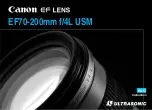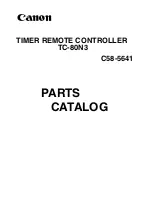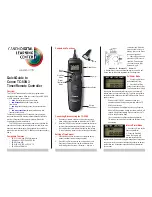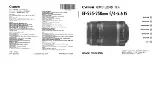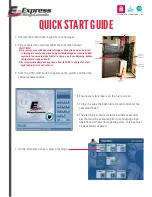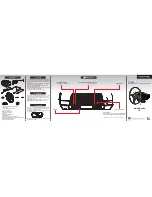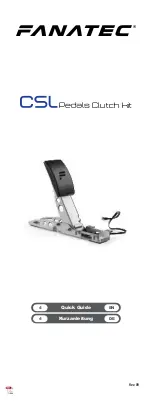
2 – Controls And Indicators
10
TASCAM FW-1884 Owner’s Manual
2.3
Front Panel Control Descriptions
1. Trim Pots 1-8
– These are analog level controls
for the input level of the Mic (XLR) and line inputs 1 –
8. Their function is the same regardless of the control
surface mode selected. It’s important to note that the
best signal-to-noise ratios are achieved by maximizing
the level of analog inputs at the A/D converters. For the
mic and line inputs of the FW-1884, the trim controls
provide the means for optimizing these levels. For a
complete discussion of this issue, please refer to Section
section 4.3.3, “Setting Input Levels”
2. Phantom Power Indicator LEDs
–
These
LEDs light to indicate
+
48 V phantom power to the
XLR microphone inputs. Phantom power is switchable
in two groups of four channels, channels 1-4 and chan-
nels 5-8. The LEDs are unaffected by control mode
selection.
3. Signal and OL LEDs 1-8
–
The signal LEDs
light to indicate the presence of an audio signal on the
corresponding analog input. The OL LEDs light to
indicate a signal peaking at –2.5dBFS or higher by
default. (This level is adjustable between 0.0 dBFS and
5.0 dBFS, in 0.5 dB increments, via the FW-1884’s
control panel.) This indicates an overloaded input –
reduce the input level to that channel until this light
goes out. These LEDs indicate signal level to the eight
analog inputs regardless of the control surface mode
selected.
4. Channel Rotary Encoders
– In COM-
PUTER Control mode, these rotary encoders affect the
application parameter currently selected by the
Encoder keys. In most cases, the
PAN
and
AUX 1-8
Encoder keys correspond to the associated Pan and Aux
Send parameters in the host application. Refer to the
Application Notes for your software for details.
In MON MIX mode, these encoders function exclu-
sively as PAN controls, and the associated PAN
encoder key is always lit.
In MIDI CTL mode, these encoders send out continu-
ous controller commands.
5. Channel REC LEDs
–
In COMPUTER Con-
trol mode, these LEDs light or blink to indicate that
the selected channel(s) are in record-ready or record
status. Refer to the Application Notes for your software
for details.
In MON MIX mode, these LEDs are used to show that
channel’s PAN location. Rotating an encoder will cause
the SEL and REC LEDs to shift left/right as you move.
In MIDI CTL
mode these LEDs have no function.
6. Channel SEL Keys and LEDs
– In COM-
PUTER Control mode, these keys select the associated
channel as active in the host application. The
EQ
con-
trols will typically address the host application’s
SEL
ected channel. In most cases, holding the
REC
key
and pressing one or more channel
SEL
keys will arm
the host application’s associated channels for recording.
Refer to the Application Notes for your software for
details.
In MON MIX mode, pressing a channel’s
SEL
key
causes the
REC
indicators to show the selected chan-
nel’s pan position (indicator 1 is lit with pan position at
full left, indicator 8 is lit at hard right, indicators 4 and
5 are lit together when panned center, etc.).
In MIDI CTL mode, these keys send out specific con-
troller commands.
7. Channel SOLO keys
– In COMPUTER Con-
trol mode, these keys will solo their respective channels,
while muting the audio on all other channels in the
host application. Any number of channels can be
soloed simultaneously. (Note that in COMPUTER
Control mode, the operation of the SOLO function is
dictated by the host application. For more information
please refer to the Application notes for your DAW
software application.)
In MON MIX mode, the
SOLO
keys function is iden-
tical, but only affecting the FW-1884’s built-in moni-
tor mixer. The SOLO mode (Pre-Fader Listen or Solo-
in-Place) is selected by the
PFL
key. The PFL function
applies only to the monitor mix SOLOs.
In MIDI CTL mode, these keys send out specific con-
troller commands.
8. Channel MUTE keys
– In COMPUTER
Control mode, these keys will mute the audio of the
selected channel. Any number of channels can be
muted simultaneously.
In MON MIX mode, the MUTE keys function is
identical, but only affecting the monitor mix.
In MIDI Control mode, these keys send out specific
controller commands.



























